Interview with Goldston by Ksenia Nouril, May 2020
Universal Limited Art Editions (ULAE) was founded by in 1957 by Tatyana Grosman, a woman and an immigrant. In 1969, your father Bill Goldston, a master printer, joined ULAE, eventually becoming its Director and Owner, a position he now shares with you. Over the years, ULAE has worked with dozens of legendary artists, including Jasper Johns, Helen Frankenthaler, Marisol and Cy Twombly. More recently you have published work by Sam Moyer, Nathlie Provosty and Eddie Martinez, who represent a younger generation. It’s well known that ULAE considers the artists it works with as “family.” What principles guide you in developing collaborations with artists? What elements or factors do you consider essential for your most successful collaborations?
It is true that ULAE considers all of the artists we work with to be part of our family.
There are so many amazing artists; we couldn’t possibly work with them all! Selecting artists to work at ULAE has always been a very organic process. It is somewhat intuitive, sometimes serendipitous and often at the recommendation of another artist with whom we have worked. ULAE does not base our decision to work with an artist on their current place in the art world – we base it on who is making work most inspiring to us at any particular time.
Often artists are pulled in so many directions that they don’t have the time to commit to making prints. We are very clear that working at ULAE means making a commitment to the medium, and that generally means a lot of time in the studio. After that is established, the printers learn to read the artists – getting inside their brains – so that they are able to understand what the artist needs, often before the artist understands. The collaborative relationship that occurs at ULAE is very intimate, so it is important that the personalities are a good fit. We spend so much time together, much of it in intense creative development, through which a relationship develops rapidly.
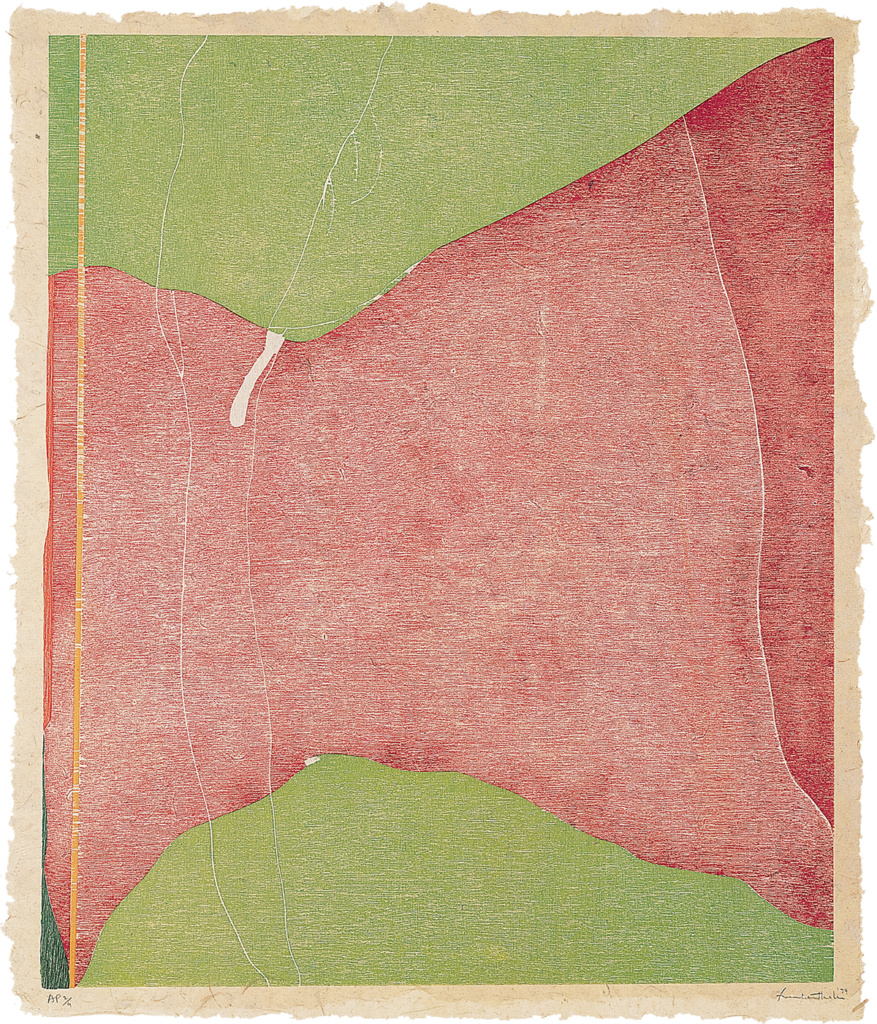
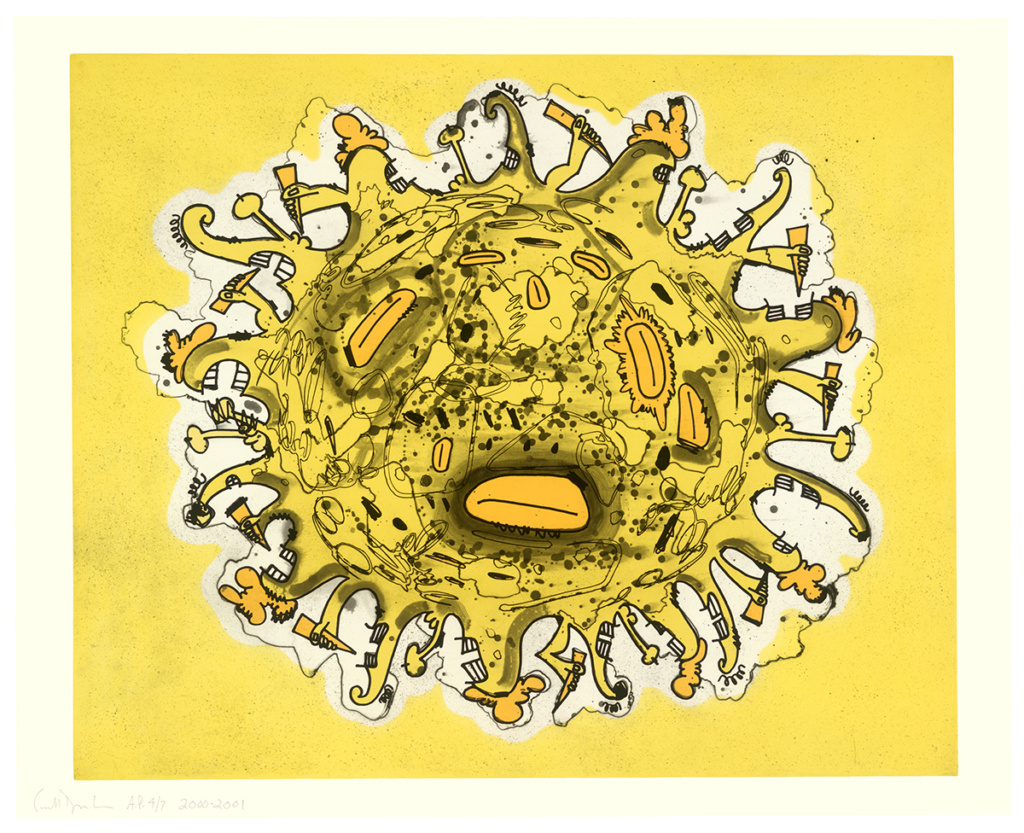
When reviewing work for a competition like this, how do you take into consideration process versus content?
This is a complicated question, because I believe that every good work has both. I have seen a lot of prints in my lifetime, and those that hold my attention usually have a story behind them. The story can be visual or technical – can I figure out what it means or can I figure out how they made it? I’m always fascinated by work in which I can’t figure out how the final image was achieved. That is constantly happening a ULAE – I step away from the creative process, and when I return, the printers/artists have come up with a new way to print it that I can’t figure out. I love that! When I am reviewing work for a competition, I don’t have the luxury of having a printer working alongside me to discuss the technique, so I have to trust my eye and my intuition.
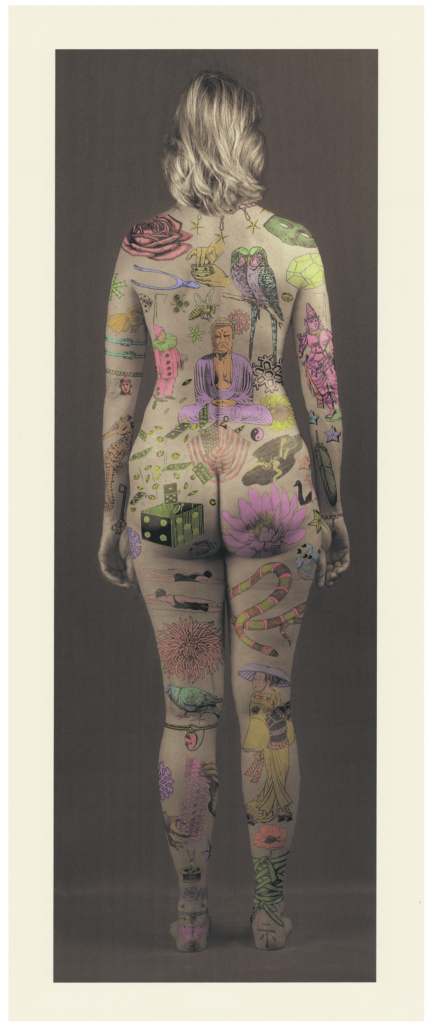
ULAE has the capacity to print in a number of techniques from lithography to screenprinting. What are your thoughts on the relationship between traditional printmaking techniques and digital processes?
The question of digital processes comes up often. Scholars shunned it at the beginning – some still do. ULAE took another path. From the very beginning, we decided to embrace the medium – to explore it in every way possible, to work with the companies developing the inks and the papers so we understood its possibilities. We also purchased a Phase 1 digital camera (which had a digital scanning back) and this opened up so many possibilities. As soon as we could purchase a large scale digital printer, we did. We began experimenting with all of the equipment so that we would be able to teach artists how to work with the medium. Our first print incorporating the “digital” medium was The Sun by Carroll Dunham in 2000. We printed yellow with the digital printer and then soaked the paper and laid down an etching plate on top of it. It was ground breaking. After that, Jane Hammond had an idea to photograph herself with the Phase 1 camera, then digitally place tattoos all over her body. While she worked with a printer on scanning her lexicon of images and placing them on her body (this was years before Photoshop was as easy to use as it is now, so it took days to work out how to wrap the tattoos around her legs/arms to look natural), we collaborated with a Japanese papermaking company to develop a handmade paper that could handle the ink. The result was a life-sized image of a tattooed woman from behind. Most recently, we worked digitally with Lisa Yuskavage. She was having a hard time creating the rich color so prevalent in her paintings in printmaking. She and my father worked closely for months on a group of images: first she drew on litho stones, then we printed them, scanned them and blew them up. Finally, we printed them digitally with all sorts of color variation in the background. She loved them and used them as a base for pastel drawings. Digital printmaking is a marvelous tool as far as we are concerned!
What projects are you excited to be working on right now and/or in the coming months?
We have so many incredible projects that we either just finished or that are in the works. Just before the COVID-19 crisis, we finished a Martin Puryear lithograph and a set of 9 etchings with Kiki Smith. We also finished a couple of Carroll Dunham lithographs. We have four magical prints with Charline von Heyl almost finished. We are just beginning production on a set of Christopher Wool etchings and a new project with Wyatt Kahn incorporates 18 panels printed on one sheet – each using a different form of printmaking. Marina Adams continues to make fantastic painting/prints on handmade paper. Eddie Martinez is working on monoprints. And I have a few secrets in my bag …new artists that I recently approached about working with ULAE.
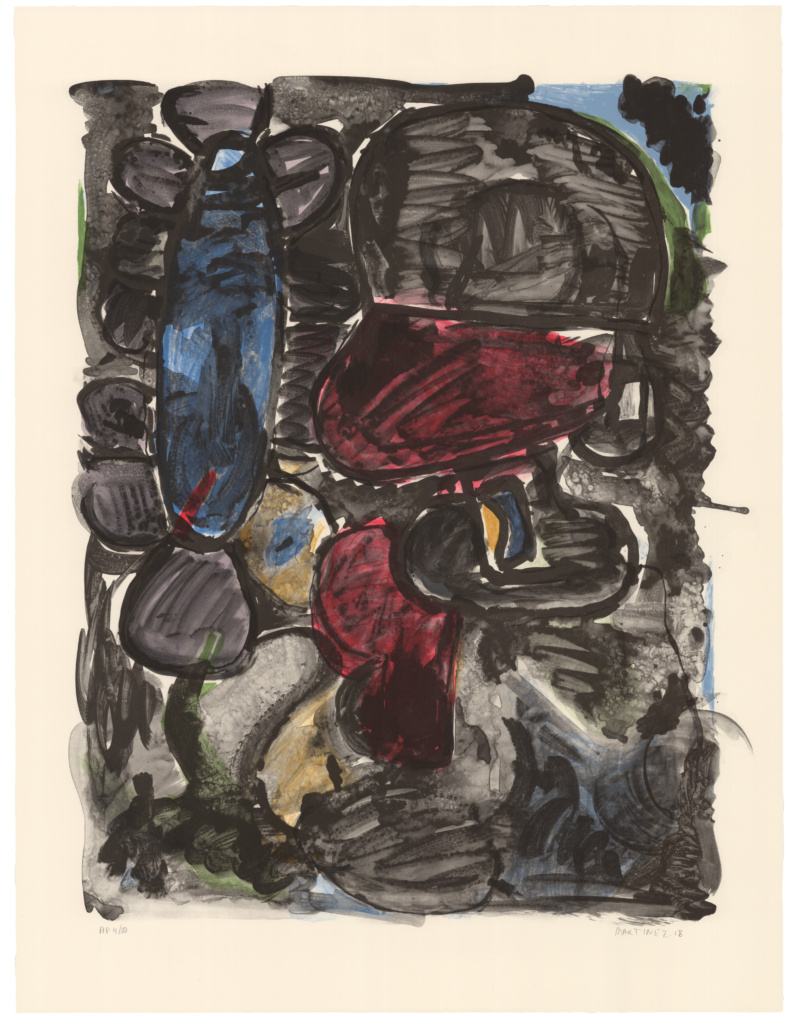

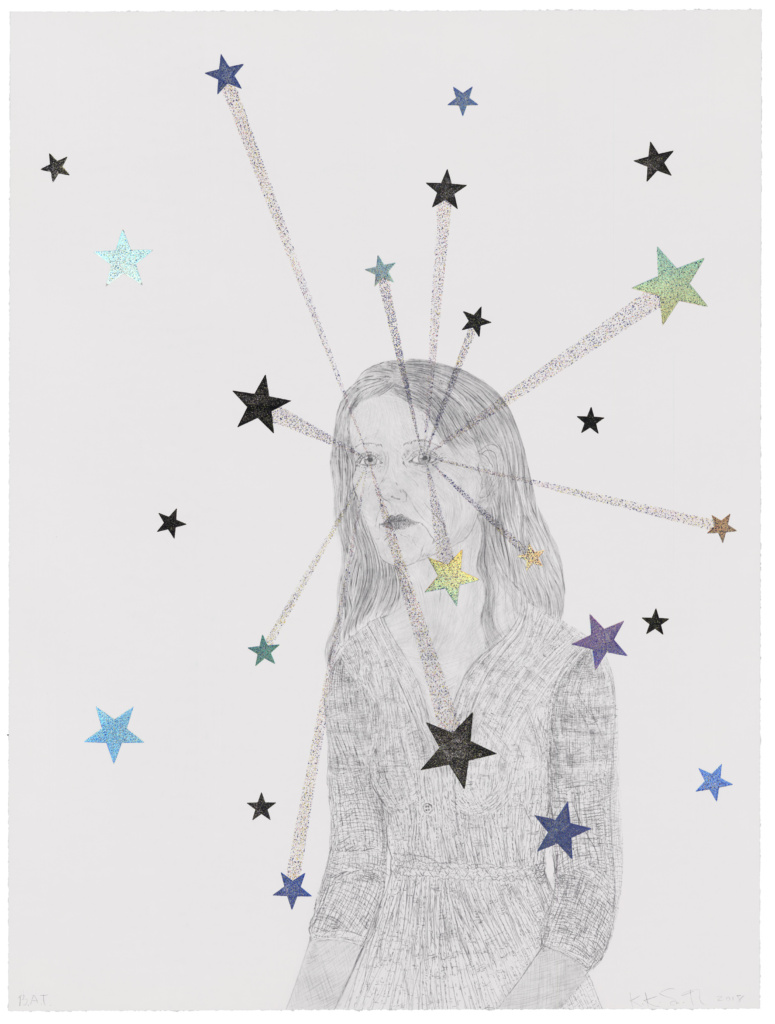
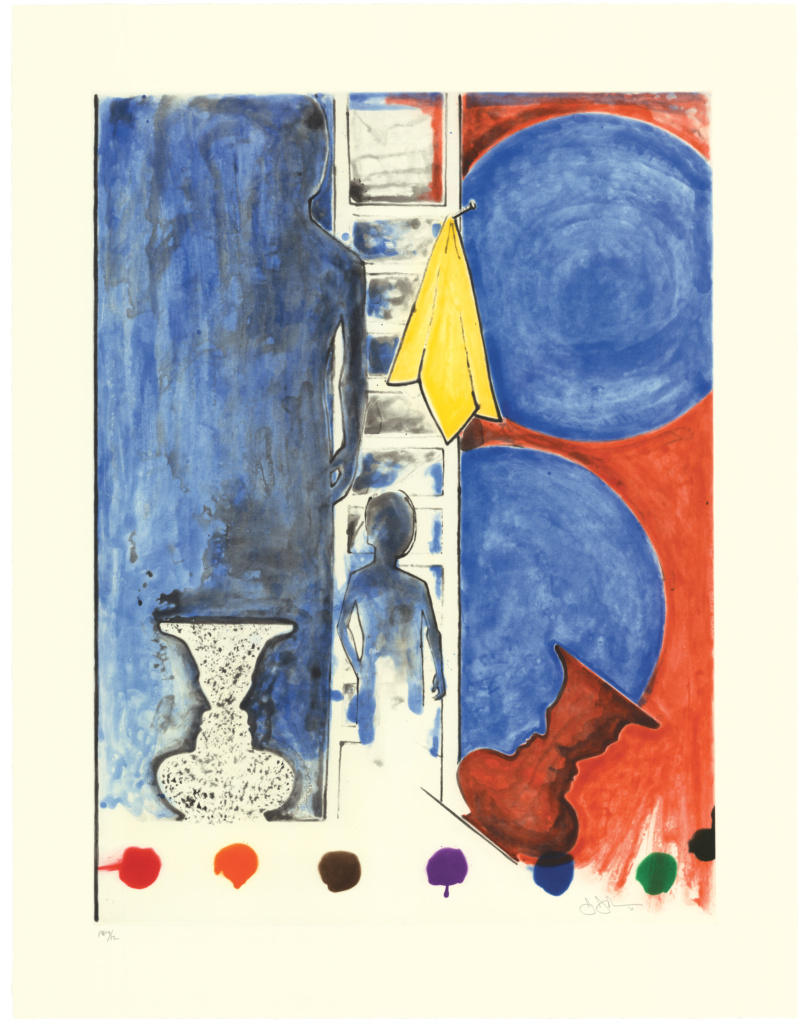
I’ve been enjoying following you on Instagram (@larissagoldston), where you post photos of the artworks in your home. What are some of your favorite works to live with?
Oh my gosh, that is really a hard question for me. I live for art. I love it. I have it on every surface on my home, from my ceiling to my floors and all of my walls. I have a ton of ULAE work hanging in my home, but I collect other works as well: drawings, paintings, photographs and sculptures. I love everything I have in my collection which includes work by Jasper Johns, Joey Kotting, David Rathman, Martha Tuttle, Richard Tuttle, Yoshitomo Nara, Suzanne McClelland, Deborah Turbeville, Dirk Stewen, Jim Dine, Robert Rauschenberg, Thomas Brouillette, Lisa Yuskavage, Matvey Levenstein, Ricci Albenda, Marina Abramović, Carroll Dunham, Paul Henry Ramirez, Alyson Shotz, Terry Winters, Julian Lethbridge, Robert Motherwell, Gandalf Gavan, Laurie Simmons, Jane Hammond, Orly Genger, Lesley Dill, Kiki Smith, Carmen Herrera, Mark Fox, Amy Cutler, Lauren Clay, G. Bradley Rhodes, James Siena, Bill Jensen… the list goes on and on. One of my most favorite pieces of all time (printed at ULAE) is Dog Descending a Staircase by James Rosenquist. I fell in love with it when I was 11 and always wanted to have it hanging in my home. For our anniversary last year, my husband surprised me and purchased one at auction – he was lucky that it was in perfect condition! I can’t get enough of Matvey Levenstein’s work. I have a couple of paintings by him and recently purchased the most extraordinary sumi-e ink drawing that I had been dreaming about for years. Really, it is too hard for me to pick my favorite. Every piece I have has emotional meaning to me as well provides a visual experience. I couldn’t live without any of them.
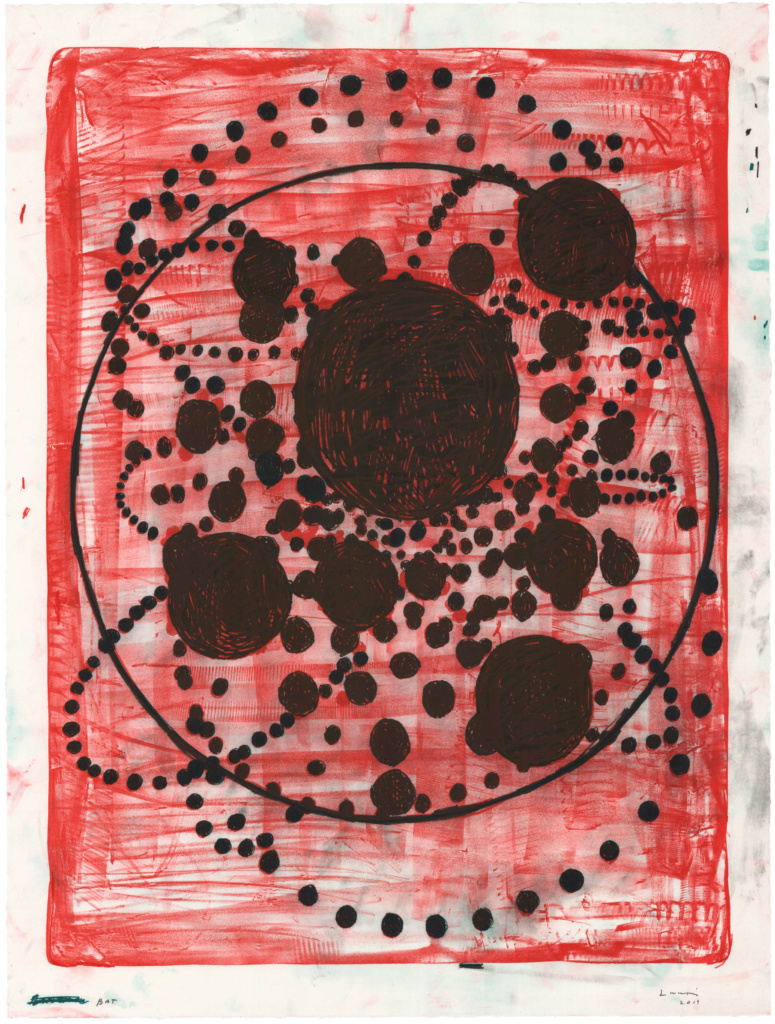
What are your hopes for the art world in the wake of this pandemic?
I hope that, after living a virtual life for months, people will crave real experiences, people will seek refuge in museums and galleries, and artists will desire interactive and collaborative experiences. I hope that dealers, publishers, curators and the like will be more supportive of one another, and that a stronger community will be built. The art world has seen difficult times and crises in the past, and it has always recovered because art is so much more than the businesses that make up the art world. Art is about passion and ingenuity and love and risk and vulnerability and necessity. People will never stop making or appreciating art, but I do hope that when all of this is over, people will have contemplated what has value and significance to them and that the art world will wake up to a new, even broader audience.
There is no doubt that everything feels bleak right now, maybe because there are so many unknowns. However, I feel that it is really important that we think ahead and don’t look back. It could take years for the art world to recover or it could take months. However much time it takes, one thing is for sure, it will be a whole new art world.